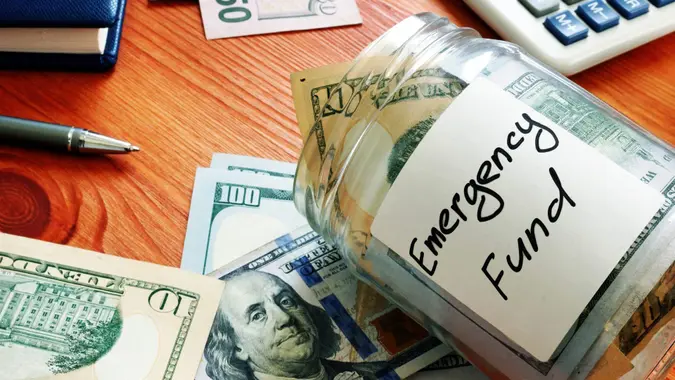3 Services People Almost Always Overpay For

Commitment to Our Readers
GOBankingRates' editorial team is committed to bringing you unbiased reviews and information. We use data-driven methodologies to evaluate financial products and services - our reviews and ratings are not influenced by advertisers. You can read more about our editorial guidelines and our products and services review methodology.

20 Years
Helping You Live Richer

Reviewed
by Experts

Trusted by
Millions of Readers
Whether they need their tires rotated, their gutters cleaned or someone to write an irrevocable trust into their estate plan, people almost always have an opportunity to shop around for the best price.
That’s because with the exception of a few highly regulated industries, nearly all service providers have discretion in how much they can charge their customers.
Even so, there are three services that almost always cost people more than they should.
Mobile Data Service
According to J.D. Power, the average monthly cell phone bill in 2024 is $141, a bargain compared to last year when it was $156. Statista data shows that Verizon, T-Mobile and AT&T have accounted for nearly the entire wireless subscription market since T-Mobile gobbled up Sprint in a $26.5 billion takeover on April 1, 2020.
But many subscribers to the big three data carriers are overpaying to talk, text and live their online lives through their devices. Most could get identical service — often on an identical network — for much less by switching to a mobile virtual network operator (MVNO).
MVNOs — like Mint Mobile, Cricket, Consumer Cellular, US Mobile and Visible Wireless — aren’t licensed mobile network operators (MNOs) like the big three. Instead, they lease the networks of MNOs to sell mobile services through their own branded businesses.
For example, Cricket Wireless uses AT&T’s network. Visible leases from Verizon. Mint uses T-Mobile. US Mobile uses both Verizon and T-Mobile.
Either way, you’re not taking a chance on some sketchy, off-brand company’s rinky-dink mobile infrastructure that they knocked together with Craftsman tools — you’re using the same networks with identical service as the big carriers.
The difference is the price.
For example, Mint’s unlimited plan is just $30 a month if you pay for a full year upfront, with three other plans going down to $15 for 5GB per month if you work from home or just don’t use a lot of data.
Car Insurance
If you’re one of the millions who began working from home post-pandemic, or if a short commute to the office or job site accounts for most of your driving, you’re almost certainly overpaying for car insurance if you don’t have a pay-per-mile policy.
According to MarketWatch, these usage-based plans charge a low flat monthly fee — often around $35 — plus a per-mile fee, usually around $0.06 to $0.08.
If your flat rate is $35 and you drive 400 miles per month at $0.07 per mile, your bill would be $63 per month or $756 per year. Comparatively, U.S. News and World Report says the average driver pays $172 per month or $2,068 per year for car insurance.
Smaller providers like Metromile specialize in mileage-based coverage, but household names like USAA, Nationwide and Allstate began adding pay-by-the-mile plans to their offerings as the trend gained steam.
Generally, if you drive less than 10,000 miles per year, you’ll probably save money by paying for your coverage by the mile.
Revolving Credit
If you pay your credit card statement balance in full every month, you pay no finance charges for the money the bank loaned you to make your purchases. But if you don’t, you — like everyone else who carries a revolving balance — are paying too much to borrow money.
According to Forbes, the average APR across all credit cards is 27.7%, a rate that makes unsustainable toxic debt inevitable if given enough time.
Comparatively, you can still get a HELOC for under 10%, a home equity loan for under 9% and a personal loan for under 8%.
To illustrate the point, LendingTree analyzed the difference between paying off a $10,000 personal loan with an 8.93% APR and a $10,000 credit card balance with a 20.4% APR, which is very low by 2024 standards.
With a $318 monthly payment, the personal loan holder clears the debt in 36 months, paying $1,436 in interest for a total of $11,436. That’s 10 months and $3,000 less than the credit card holder, who paid $4,436 in interest over 46 months for a total of $14,436 with the same $318 monthly payment.
 Written by
Written by  Edited by
Edited by 
























